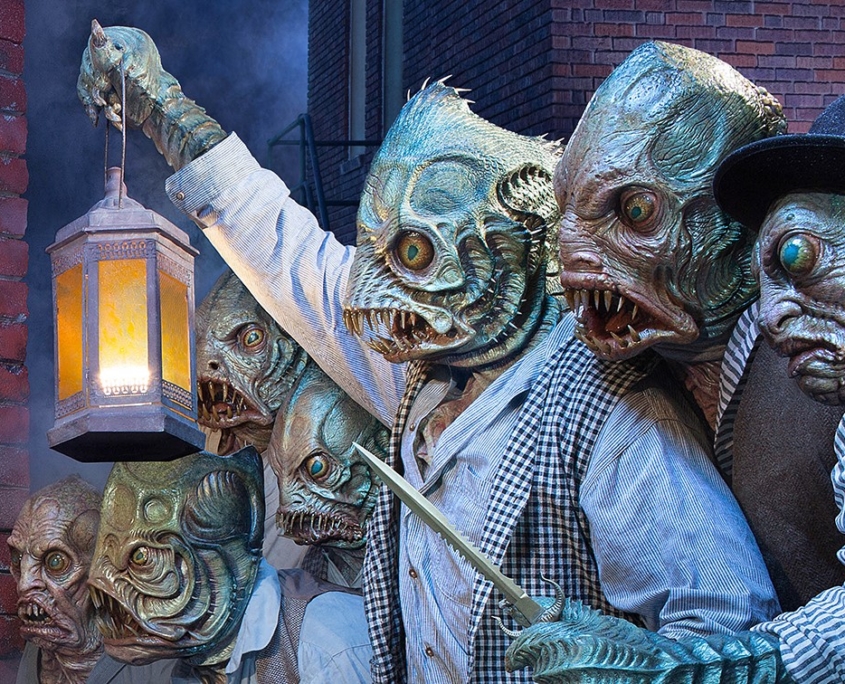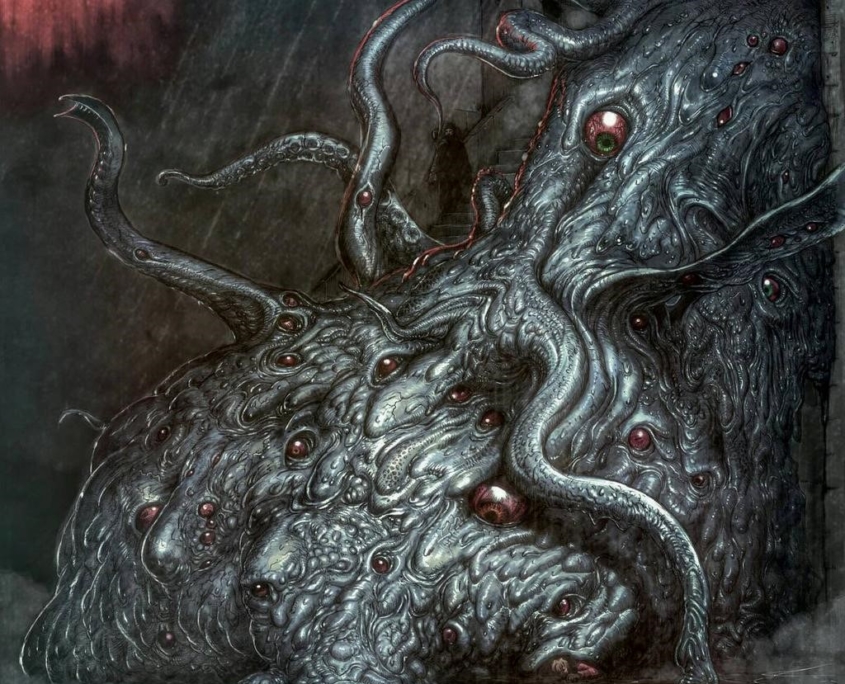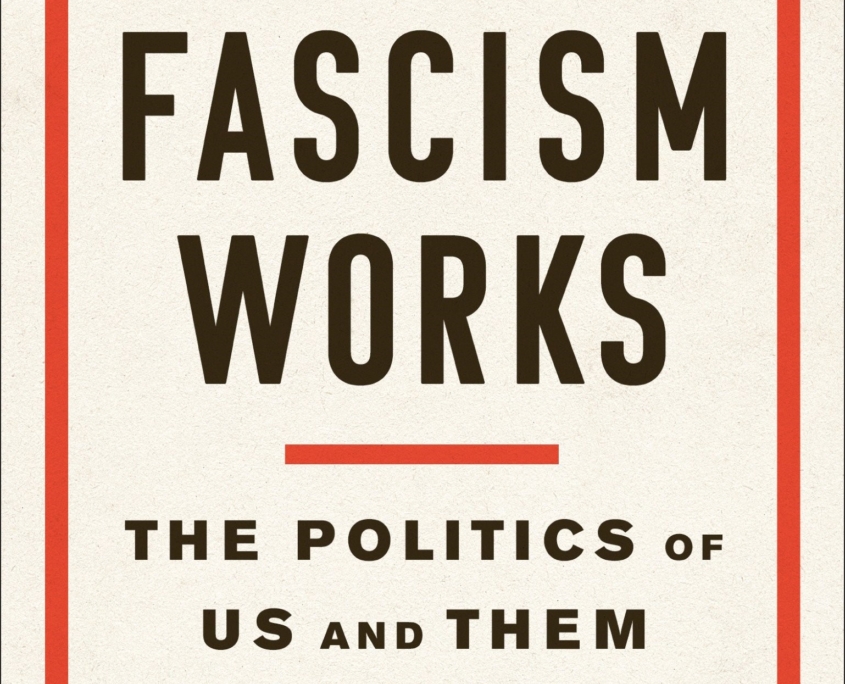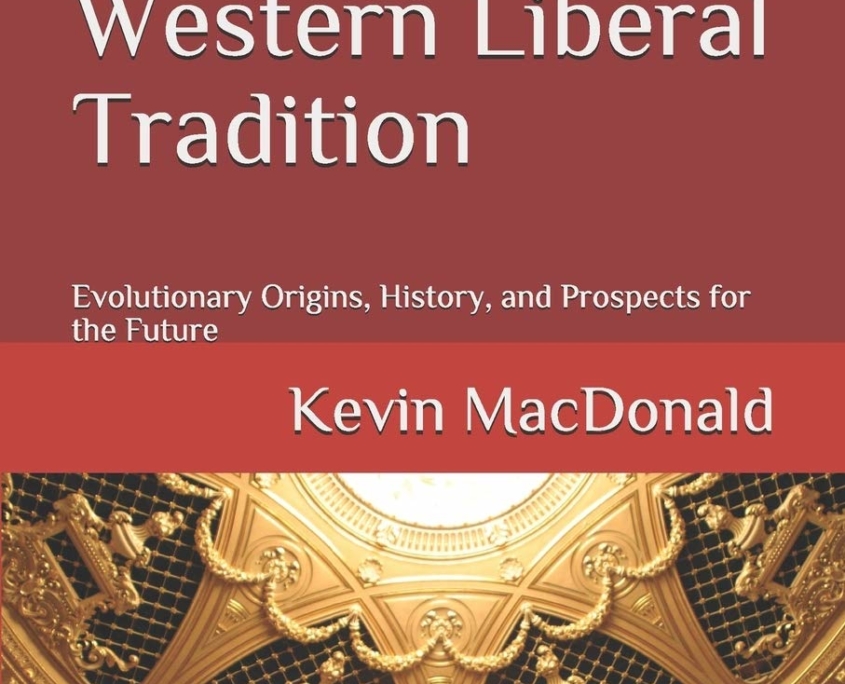A Fish Called Wakanda, Part 1
“You’ll say we’ve got nothing in common
No common ground to start from
And we’re falling apart
You say the world has come between us
Our lives have come between us
Still I know you just don’t care…
So what now? It’s plain to see we’re over”–Deep Blue Something, “Breakfast at Tiffany’s”
Reliably, right when discontent with selectively-enforced lockdowns and the collapsed fake economy was approaching a boiling point, the media lapdogs dutifully stepped in with a pair of incidents meant to distract from the real issues at hand and continue to stoke Black racial grievances and anti-White sentiment. I’ll admit, I do not know all the details nor am I here to weigh in on exactly what happened, as the specifics vary even though they generally adhere to a specific formula: The vast majority of the time, the White (or “White Hispanic” as the case may be) perpetrator or perpetrators is/are being railroaded for an incident taken out of context and wildly distorted by the media, be it edited 911 calls, conveniently neglecting to report that there were the two other people who complied with the police officers and did not resist and were thusly not beaten, or claims of leisurely jogs in work boots cut short in a hail of White bullets. It is the narrative archetype, its function, and its timing that are important to understand, not whether the media lies and pre-programmed “activists” like LeBron James start whining on Twitter. That is a given.
As Jean Raspail wrote, “The important thing about oppression, if you’re going to keep it panting in the public eye without killing it outright, is to make sure there’s plenty of variety.” So the narrative and the course of events follow a predictable pattern while the details and the specifics change just enough that it feels novel if you’ve been sufficiently programmed, which unfortunately a huge number of people have been, through various mechanisms including but not limited to the media. The narrative supersedes all facts; in fact, the narrative usually exists in direct opposition to the facts.
Myself and others have spilled a lot of ink over the consequences of the manufactured coronavirus that got away from the Chinese lab operating with significant US funding, including the sudden evaporation of tens of millions of jobs, the consequences of the outsourcing of virtually all industry, cavalier governance and insider trading, and the fact that the US military will not accept anyone in the future who’s contracted the coronavirus, which leads to some rather uncomfortable questions that are beyond the purview of this piece. Most crucially, however, all of these aspects are of a piece, and they add up to the exposure of just how fragile the neo-liberal system is and what mechanisms function to continue its predominance. Americans are rightly furious, and the distractions are necessary to pull attention away from gross malfeasance and the fact that the government itself exists to do the bidding of the capitalist class. This has been the case for over a century, but the rendering of America into a portfolio asset has intensified with the commitment to neo-liberalism and the erosion and often erasure of points of resistance, both within the government and the general population. Much of this lies with the importation of millions of proxies, but many average Americans have also been indoctrinated, and the general default to squishy liberalism and crony capitalism as a given is a major issue. Any premise that starts with liberalism and especially neo-liberal economics as its baseline is doomed to fail.
Poland
Poland, which has resisted European Union “refugee” quotas and large-scale immigration for the most part, nevertheless stands poised to make the same suicidal decision to start importing “temporary workers” just as Germany, the US, the UK, and many other Western nations before them have in the name of a “worker shortage” and various other thin justifications for the corporatocracy to pad its bottom line. Indeed, the economists are adamant: old, White Europe and its progeny need infinity immigrants to buoy their economies. Stefan Hardege, head of labor market and immigration at the Association of German Chambers of Commerce and Industry (DIHK), agrees that the 260,000 annual equatorial imports calculated by Bertelsmann Stiftung’s migration report is “realistic.” From this year, Germany has announced plans to bring in an increase of 25,000 “specialized” workers per year of non-EU origin. Sounds an awful lot like the American H-1B visa, which is a total scam. There is a veritable plethora of various visas in America designed to import as much scab labor as possible (not to mention the “investor” visas, student visas, chain migration, illegal alien migrant labor, et cetera, et cetera). According to Michał Wysocki, an expert on immigration law, Poland’s major companies increasingly prefer to hire workers directly because “those employers who invest in importing a foreign worker from so far want to create a bond between them and a company so that they can stay in Poland and bring…their families over.” As Marta Kucharska writes:
In 2017, Poland granted residency to 683,000 foreigners, according to Eurostat— one-fifth of all such permits issued across all the EU-28 member states and by far the biggest number for a single country. Eighty-seven per cent of those visas were for work. In addition, according to the OECD International Migration Outlook 2019, Poland has welcomed a record number of migrants in recent years: in 2017, with 1.1 million registered migrant workers, Poland was the world’s top destination for temporary migration, ahead of the United States. Despite receiving record numbers of labour migrants, Poland still needs more workers to power its booming economy – 1.5 million more by 2025, according to PricewaterhouseCoopers.[1]
Most of these migrants have traditionally come from other European countries, albeit poorer ones, such as the Ukraine, Moldova, Georgia, and Belarus, but the “pull” factor of higher wages and the easing of visa-free entry to Ukrainians to the EU has found workers pushing west. Consequently, this manufactured “need” has unsurprisingly found a goldmine in the fecund Third World. Kucharska continues:
The number of Asian workers in Poland is currently still small but this is expected to increase significantly in the coming years. According to data from the Ministry of Labour seen by Equal Times, the second highest number of work permits granted to a single country in 2018 went to 22,336 Nepalese workers. … In addition, 10,002 Bangladeshi workers and 9,706 Indian workers were granted work permits in the same year. … There are small numbers of foreign nationals from Africa and even smaller numbers from the Middle East who were granted work permits in 2018…but existing recruitment networks in south-east Asia make the region an ideal source for qualified workers. … The hiring of overseas workers is unlikely to stop anytime soon, especially as business representatives are currently lobbying the government to ease the procedures for hiring migrant workers. The Polish embassy in New Delhi, for example, which covers India, Nepal and Bangladesh, currently has more visa applications than it can process. As a result, many recruitment agencies are now pinning their hopes on workers from the Philippines to fill jobs in the IT sector and workers from Vietnam to fill vacancies in factories and construction. “When we take into consideration the needs on the market resulting from demographics, the emigration of Poles and the labour shortfall, Poland has no choice but to bring in workers from Asia,” says Grzegorz Tokarski, a private sector expert and CEO at Filipino Overseas Workers recruitment company.[2]
Obviously this influx serves an ideological function as the ruling class’s orientation is obviously anti-White (Kucharska’s article quotes a “migrant” complaining about “racism” and a dearth of “diversity,” as according to imported invoice analyst Latika Bhardwaj, “Poland is not used to brown and Black immigrants”) yet without confronting the economic aspect, we stand no chance. Despite Poland’s avowed resistance to fake refugees being dumped within its borders by the EU, it is being eaten from within by a push to “internationalize” and feed the neo-liberal economic machine with cheap, disposable labor:
“Workers from Asia are solid, thorough and accurate, the result of their Asian upbringing,” claims a recruiter named ‘Jack’ from Gdańsk, pitching his services as a recruiter of workers from Nepal, Bangladesh and India on the jobs board of Lento.pl. “They are good at doing repetitive physical jobs, requiring manual skills, stamina and attention.” Jack offers companies a ‘try before you buy’ guarantee – if after a month, a labourer doesn’t meet the employer’s requirements, the company will get another worker without bearing any costs. Equal Times also saw an advert from JDM Poland, a recruitment agency from Warsaw, advertising migrant workers on Gumtree as being “100% available and willing to work more than 200 hours per month”. According to the Polish Labour Code, as a rule, working time may not exceed an average of 40 hours in a five-day working week. The agency assures prospective employers that “overtime is at the same rate [as normal pay]”. Grzegorz Sikora, communications director for the Trade Unions Forum (FZZ), tells Equal Times: “We are dealing with the next stage of the post-colonial world division”. While trade unions acknowledge that Poland needs migrant labour, the concern is that “the policy of hiring and the management of these workers does not meet European standards”. Social dumping, as well as the driving down of wages and working standards are all dangers that the unions are trying to prevent. “The further east Poland hires its workforce, the graver the problem becomes,” says Sikora.[3]
Romania
I’ve addressed this economic aspect in great detail with The Way Life Should Be? with Maine as a microcosm, and as we can see, it truly is a microcosm for the Western world. Like Poland, Romania’s economy is experiencing a major uptick, and yet despite the “increasing pressure on employers to find skilled workers in order to expand their businesses, recent official data show Romania is far from being considered in a ‘workforce crisis’ situation.” Nevertheless, the imports have begun to increase with the usual thin justifications. As Sorin Melenciuc reports:
Romania issued work permits during the first two months of this year [2018] for 1,174 foreign employees which came mainly from Vietnam, Turkey, Nepal, China and Serbia, according to General Inspectorate for Immigration data sent to Business Review. Morocco, Bangladesh and Brazil enter for the first time in the top 10 countries of origin in Romanian statistics regarding foreign workers. These figures show a record request for foreign employees in Romania, where businesses struggle with workforce shortages in sectors such as construction, HORECA or logistics. … But the real number of foreign workers in Romania is much higher, due to unreported work. “We mention that during the year 2017, the police officers of the General Inspectorate for Immigration carried out 994 actions and controls on the fight against illegal work, at 1,559 companies, which resulted in the detection of 515 foreigners who were engaged in non-legal gainful activities,” General Inspectorate for Immigration said to Business Review.[4]
Shortfall, shortfall, shortfall: in 2019, Hungary issued 75,000 work permits to Chinese, Indian, Vietnamese, and Ukrainian nationals. And yet, as SNB Romanian trade union head Dumitru Costin states, the employers are abusive toward their scab labor who are “much, much cheaper than the local[s]” and that “it is obvious that they will obey without flinching and work unpaid overtime for fear of being sent back to their country.” Hungarian construction worker union head Gyula Pallagi states that employers “exploit the language barriers by faking even their working papers,” and Zoltan Laszlo, the head of the Hungarian Metallurgical Trade Union, says that employees are often pushed to work under less-than-ideal conditions under the threat of being “easily replaceable” with Mongolians or Vietnamese.[5]
Germany and the Czech Republic.
The rhetoric is all-too-familiar; for Jens Kastner (this is a longer quote, but worth excerpting at length):
The Czech Republic and Germany are also trying to attract workers from the Philippines and other Asian countries to fill local positions, as their labor markets face aging populations, a brain drain and lower birthrates. Analysts say that Slovakia, Hungary and Romania will also be forced to open their doors to Asian workers. … Some analysts estimate that Poland will face a shortage of four million workers by 2030. As such, the government is particularly keen to attract Filipino workers to its IT, construction and medical sectors, including caregivers for the elderly. “The Deputy Labor Minister [Stanislaw] Szwed has approached us, and in early August we responded with a draft agreement stipulating the protection mechanisms we expect for Filipino workers, which will hopefully be signed during the remainder of this year,” said Patricia Ann V. Paez, Philippine ambassador to Poland, in a recent interview with the Nikkei Asian Review. … Paez said: “Poland will be an attractive destination for our workers due to its strong labor rights, the shared Catholic faith and strong family values, the only possible drawback being the cold weather.” … The Czech Republic has the lowest unemployment rate in the EU of 3.1% and is facing a shortfall of 310,000 workers. To this end, the government loosened immigration rules for Filipino and Mongolian workers in January. It will now take Filipinos just three months from the time of job application to landing in the Czech Republic, half the time it used to take…From Mongolia, the Czech Republic is hoping to draw in workers in the meat-processing and dairy industries. Both countries signed an agreement in November to train Mongolian workers in those sectors. Vladan Raz, a Czech recruiter with Manila-based EDI Staffbuilders International, said that he is looking to employ Filipinos for local e-commerce platform Alza for a variety of logistics positions. He is also preparing to recruit Filipinos for Czech Airlines Technics and German wholesaler Metro Cash & Carry. … In Germany, the “Triple Win Project” agreed between both countries in 2013 is also coming to fruition, with one of the major hospital operators, Asklepios, welcoming its first six Filipino intensive care and surgery nurses in July, and another 253 to follow in the coming months [2018]… Daniela Zampini, an employment specialist for Central and Eastern Europe at the International Labor Organization, said that acute labor shortages in some industries may push the private sector to challenge some governments’ anti-immigration stance. Zampini pointed to Hungary as an example. Construction wages there have been growing at double-digits year-on-year, pushing industry associations to pressure the government to open the door to more Asians to keep costs low.[6]
[1] Kucharska, Marta, “Despite the anti-immigrant rhetoric, Poland receives more migrant workers than anywhere else in the world,” October 11, 2019. Equal Times.
[2] Ibid.
[3] Ibid.
[4] Melenciuc, Sorin, “Foreign workers employment at record high in Romania; Vietnam, Nepal, Morocco, Bangladesh and Brazil among top 10 countries of origin,” March 23, 2018. Business Review.
[5] Rodina, Mihaela and Ionut Iordachesku, “Romania, Hungary fill labor shortage with Asians,” November 10, 2019. Asia Times.
[6] Kastner, Jens, “Poland cracks door open for Filipino workers,” August 17, 2018. Nikkei Asian Review.











 One of the themes of
One of the themes of 


